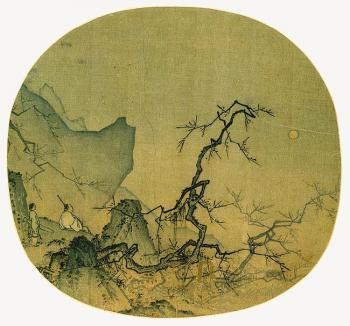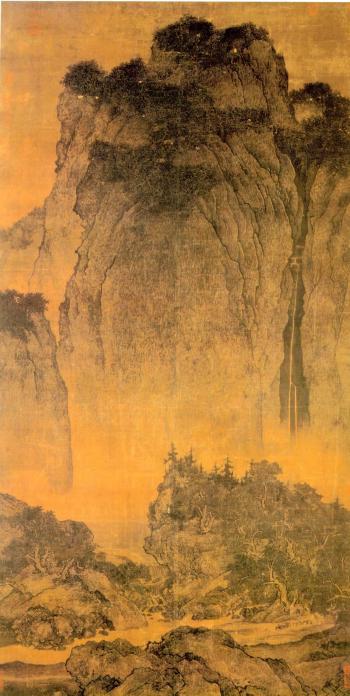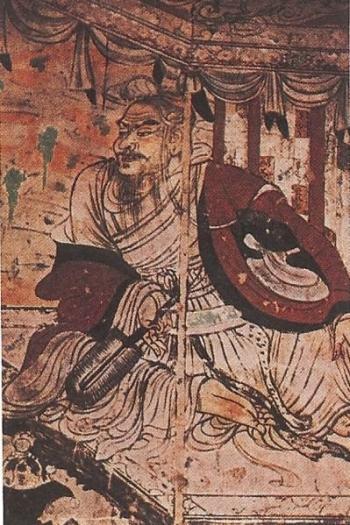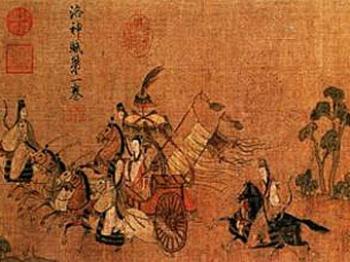Wang Wei 王維 (699-761) was one of the masters of poetry in the Tang Dynasty. In his later years, he lived a reclusive life and cultivated himself according to the Buddhist doctrine. It was then that he started to paint.
He was considered by Chinese art historians of the Ming Dynasty—one of whom was Dong Qichang (董其昌)—to be the founder of the Southern School of Chinese art and became the model for the later literati artists (文人畫家). A literati artist focuses more on personal expression than technique.
Among his 400 preserved poems, the most representative ones are those to describe the natural beauty of mountains, water, and gardens, and his reclusive life. He built his own garden, which became one of the most famous gardens of the Tang Dynasty. It was also the earliest landscape garden in China. He gained many creative inspirations in this garden, and created a lot of landscape poems and paintings.
Most information about his significance as a painter comes from literary sources. He stated: “When you paint a landscape, it is more important to use your instinct than your brush.” He is believed to be the first painter to treat landscape as an evocation of nature rather than as a vehicle for colorful artificial decorations. He regarded landscape painting as an intimate communion with nature. His work as an artist is known only in a few inadequate rubbings taken from stone engravings of his original painting and in paraphrases of his paintings by later artists. His landscape paintings often are the monochromatic ink style, which depended for its effect solely on a stringent and expressive use of black or gray ink washes and multiple small brushstrokes.
He was considered by Chinese art historians of the Ming Dynasty—one of whom was Dong Qichang (董其昌)—to be the founder of the Southern School of Chinese art and became the model for the later literati artists (文人畫家). A literati artist focuses more on personal expression than technique.
Among his 400 preserved poems, the most representative ones are those to describe the natural beauty of mountains, water, and gardens, and his reclusive life. He built his own garden, which became one of the most famous gardens of the Tang Dynasty. It was also the earliest landscape garden in China. He gained many creative inspirations in this garden, and created a lot of landscape poems and paintings.
Most information about his significance as a painter comes from literary sources. He stated: “When you paint a landscape, it is more important to use your instinct than your brush.” He is believed to be the first painter to treat landscape as an evocation of nature rather than as a vehicle for colorful artificial decorations. He regarded landscape painting as an intimate communion with nature. His work as an artist is known only in a few inadequate rubbings taken from stone engravings of his original painting and in paraphrases of his paintings by later artists. His landscape paintings often are the monochromatic ink style, which depended for its effect solely on a stringent and expressive use of black or gray ink washes and multiple small brushstrokes.




